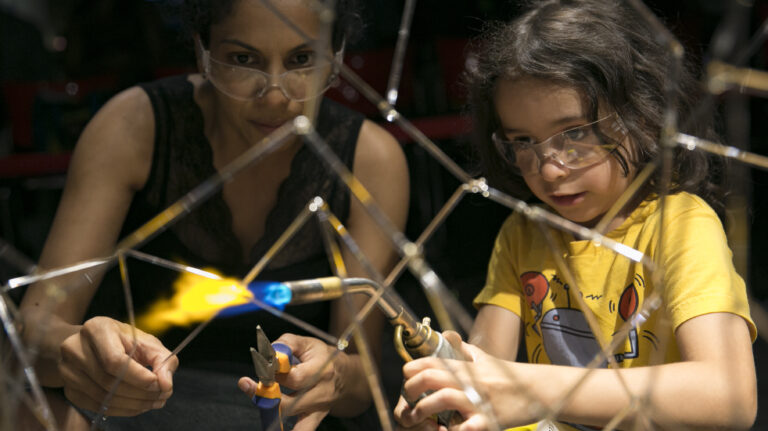
The story of glass begins from the time that human beings discovered the fact that sand, at high temperatures, becomes molten to form a non-crystalline substance. This had the ability to become solid and hold its shape after being exposed to temperatures beyond 1450 degrees centigrade. The earliest known glass was formed this way (naturally and by design) and continues to do so till today. Glass substances like Obsidian, fulgurites or moldavite can occur naturally in certain conditions; for instance, Desert glass can be formed from the silica in sand as a result of lightning or meteor strikes. Around 3500 B.C. is the date to which glass as a medium of aesthetic expression is traceable. The invention of glass has been attributed to the Egyptians, Mesopotamians and Romans. The earliest known glass examples were beads, accidentally created by working with forged metals, and these became used as currency between the African continent and Europe; they were also present in the Indus Valley Civilisation. In C 2nd century BCE glass material was brought to the Indian subcontinent by Romans to the port of Arikamedu, an early trading post near Puducherry in Tamilnadu. Since 1982 this coastal fishing village has been brought under the Archaeological Survey of India. Research digs have found Amphorae, Roman lamps, glassware, glass and stone beads, and gems at the site. Centuries later, the northern Italian region continues to be considered the homeland of modern glass art (Murano and Venice in particular).
An interesting location to study glass-making in India is Kapadvanch in Gujarat. Here glass mirror production has been ongoing from the Mughal period (early 16th C) until recent times. The coloured glass work found its way into wall murals and as embellishments within textile embroidery, among other things. Functioning as a crafts centre, Kapadvanch also produced glass bottomed hookahs, chandeliers and other glass fixtures. Firozabad in Uttar Pradesh, Northern India remains until today a prominent site for glass blowing and production of glass artefacts, again with its history connecting to the Mughal period and the abundance of glass work during the time. The Mughal court, high patrons of the arts, brought artists from Persia to the small town and they set up shop to craft a myriad different kind of glassware including spittoons, dishes, bottles and other items. Glass bangles and decorative blown glass baubles are ubiquitous with the place. The communities of artisans here are trained in the craft from young ages and are fluent in manipulating the medium.
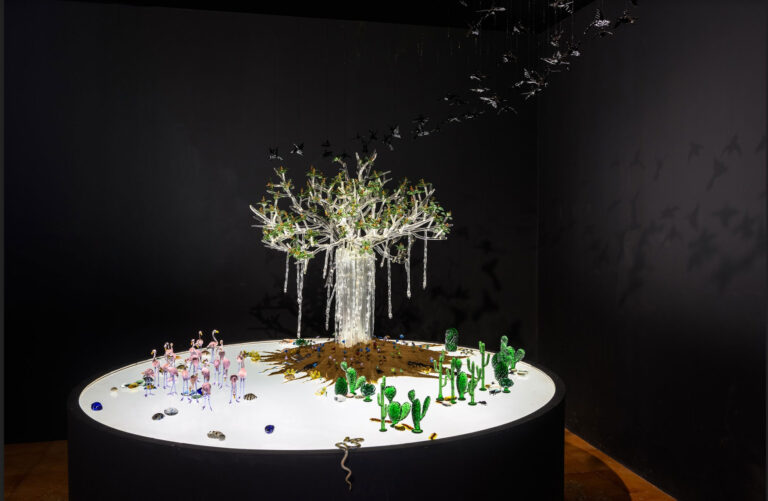
Swagata Naidu of National Institute of Design, Ahmedabad with Rajesh Sharma and Zafar Ahmed of Firozabad
at Kindling Change exhibition Serendipity Arts Foundation 2019.
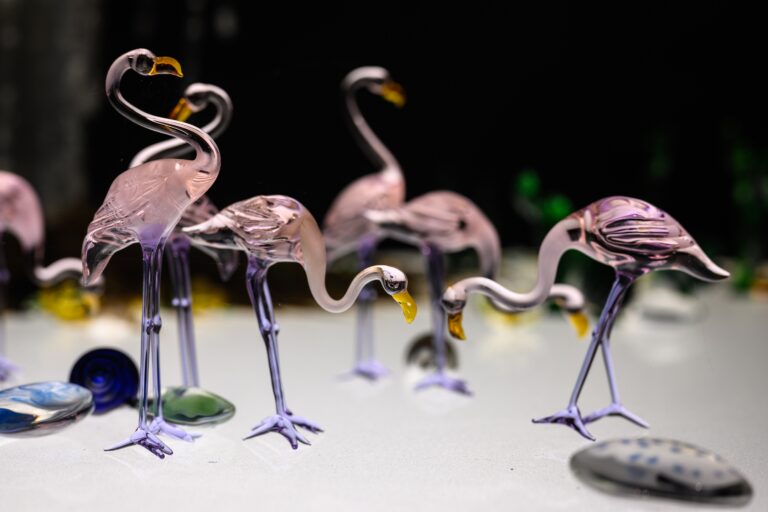
With newer technologies and better furnaces, some have even collaborated with mainstream artists to create art installations. “Kindling Change”: Fired material design interventions in ceramics and glass for living sustainable craft – curated by Kristine Michael for Serendipity Arts Festival 2019 showcased several path-breaking installations in blown glass, including “My Glass Galaxy” by artist Srila Mukherjee and glass blower Pappu Sarfuddin from Firozabad; Swagata Naidu (from NID) along with craft-persons Rajesh Sharma and Zafar Ahmed also showcased their installation that had a multitude of glass objects reflecting the natural world and all its creatures. Srila Mookherjee, who initially learnt the art of glass blowing under Anthony Stern in London, has a state-of-the-art studio in Kolkata where she continues to create powerful forms from molten glass, striving to challenge and expand the possibilities of the medium.
A studio set up for glass along with the requisite infrastructure, furnaces, electric connections and man power is a costly affair. It is one of the reasons there are very few contemporary glass artists in India. The three foundational techniques for working with glass are blowing, casting, and lamp working. The most traditional technique is glassblowing. It involves heating glass in a furnace, gathering molten glass on the end of a blowpipe and blowing a bubble of glass. Casting glass involves pouring molten glass into a mold, and allowing it to melt in a furnace. Glass can also be placed into the mold in solid pieces that melt in the furnace, conforming to the shape of the mold (such as slumped glass). Pâte de verre, a casting method that literally means “glass paste,” employs fine glass granules applied within a mold. Glass can be created to any scale and for a plethora of purposes. Looking back historically, it was at the turn of the 19th century that mechanisms changed the ways in which glass was produced. Some of the leading ateliers took glass art to greater heights – among them Lalique, Tiffany, Daum, Gallé, the Corning schools in upper New York state and Steuben Glass works. Prominent glassblowing artists in Western history are Dale Chihuly, Marvin Lipofsky, and William Morris. A few masters of glass casting techniques are Ann Wolff, the artist couple Stanislav Libenský and Jaroslava Brychtová, and Klaus Moje. In contemporary times artists across the globe are utilising the unique expressive and technical possibilities of glass to its utmost.
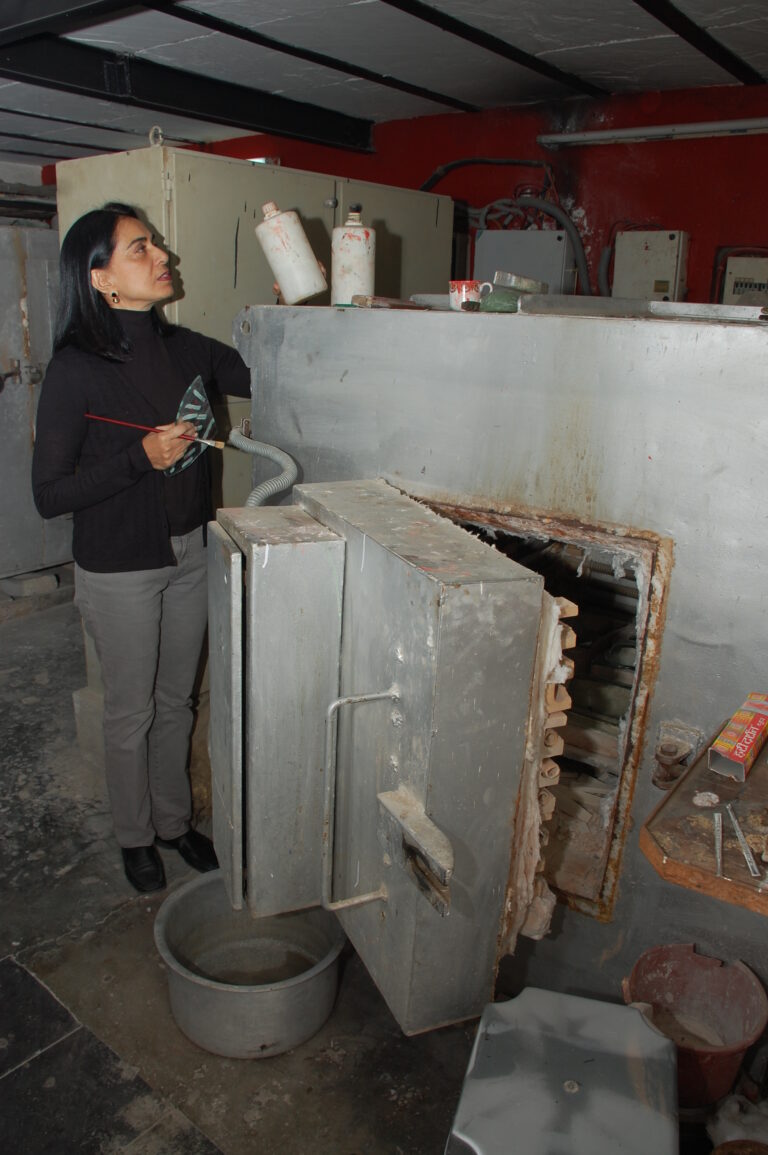
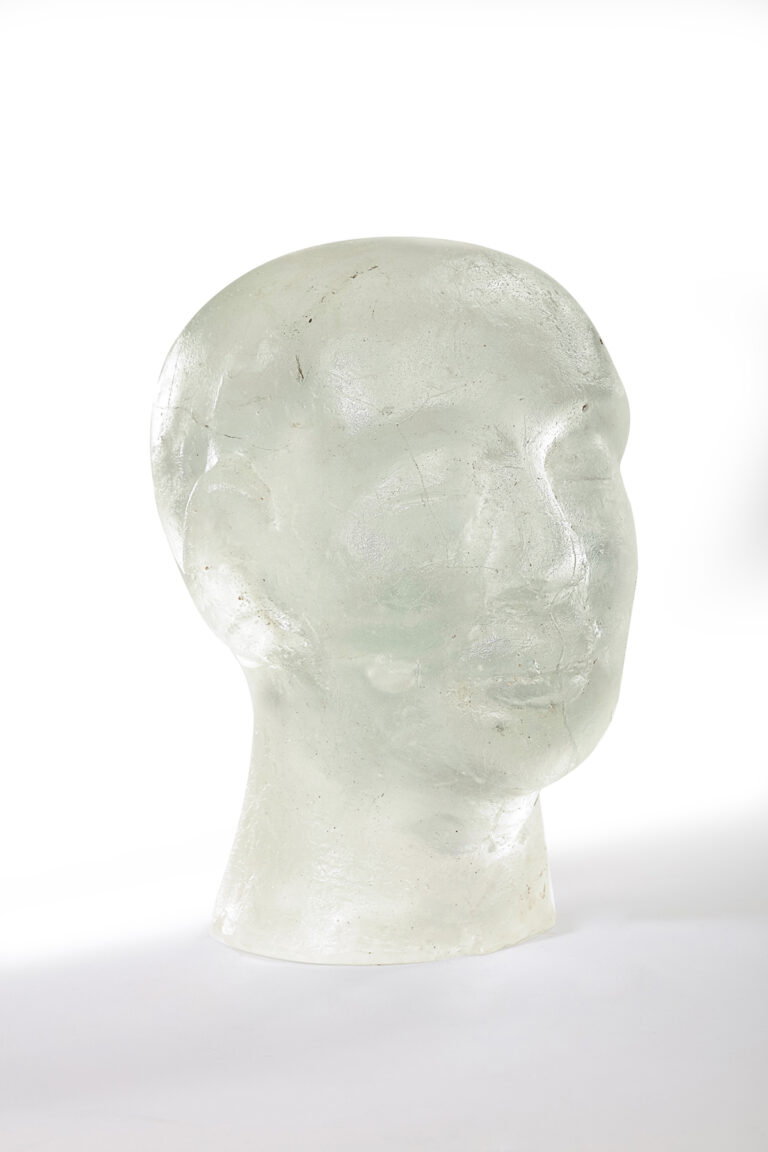
Hemi Bawa is one of the most prominent artists working with artisanal cast glass techniques. With a deep love for the ruggedness of the medium, and its ability to capture light and transform the experience of space, she has been experimenting within her studio practice for several decades. She has received the prestigious Padma Shri by the Government of India for her service to the arts and her works have been invited and collected by prominent museums such as the Corning Museum of Glass, New York (2005) and the Sculpture Garden at Tuscany, Italy (2001). Working with glass has meant managing and nurturing balances between contrasts – liquid and solid, transparency and opacity, fragility and strength. For her sculptures and glass montages, she works with both ‘hot’ and ‘cold’ glass techniques – like kiln glass casting, or etched and printed glass respectively. With an interest in the overlap of the physical and conceptual realms, Hemi builds bridges between the two, defining her personal aesthetics through an interplay of material, form and meaning.

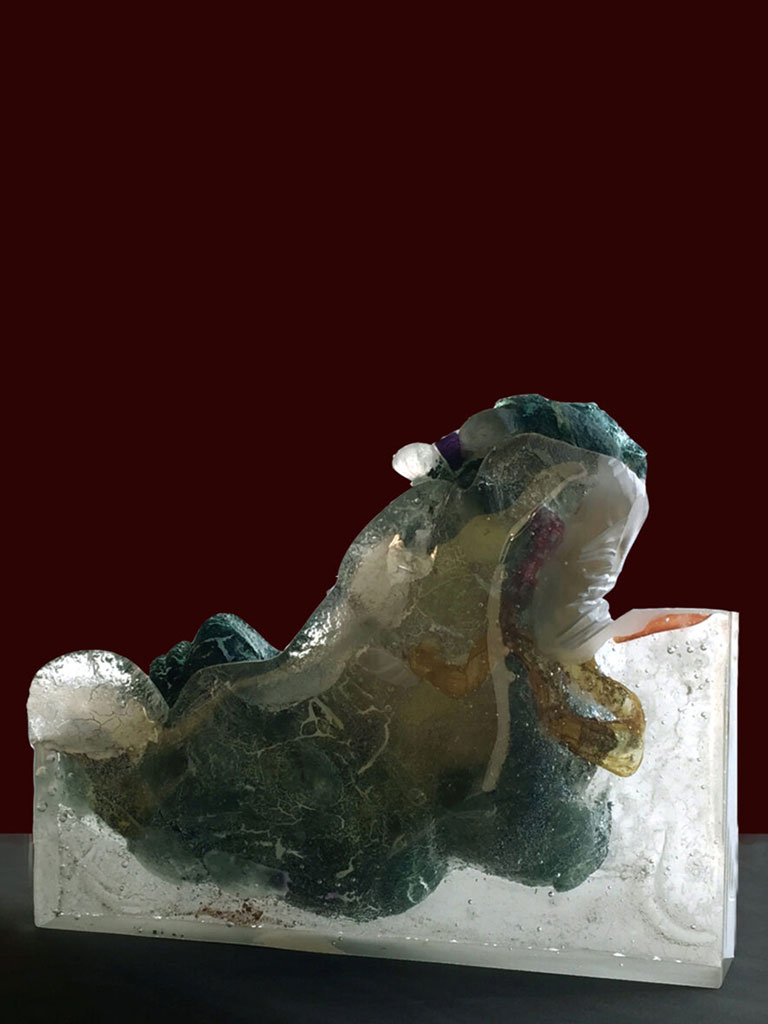
Sisir Sahana is a painter and sculptor originally from Bengal. He received a Merit Scholarship from Viswa Bharati University and the Commonwealth Scholarship in 1993-1994 that gave him the opportunity to study stained glass painting that had an impact on his further engagement with the glass medium and influenced his work significantly. He uses a combination of sand and soda lime, along with colouring agents, to produce a raw material, which melts together to form molten glass and he then organically molds into forms. His sculptures embrace a combination of figuration and raw abstraction, employing the mediums subtleties to create conceptual narratives. A widely exhibited artist, he is a professor in Ceramics and Glass, Department of Design in Kala-Bhavana, Visva-Bharati University, Santiniketan.
Vijay Roy is another Indian artist exploring glass. He has a degree in painting but became increasingly interested in glass later. With significant experience working with the medium, he advocates teaching glass blowing techniques in MS University Baroda, where he currently lives and works. His works are mostly inspired by the organic shapes and forms in nature and carry the lightness that is bestowed by the blown glass process. Originally from Kerala but teaching at the MS University Baroda as well, painter and mural artist, Sasidharan Nair has specialised in the Kiln-formed glass process with training from Edinburgh in the United Kingdom; he is one of the few in India to have mastered this stained-glass making process. Working with both fine art glass as well as décor design and utilitarian objects (the latter along with his colleague Anjum Chaturvedi), Sasidharan’s work takes inspiration from oral traditions and contemporary literature. He has continually experimented with new concepts and techniques through workshops at the National Institute of Design, Ahmedabad, and at his personal glass studio in Baroda.
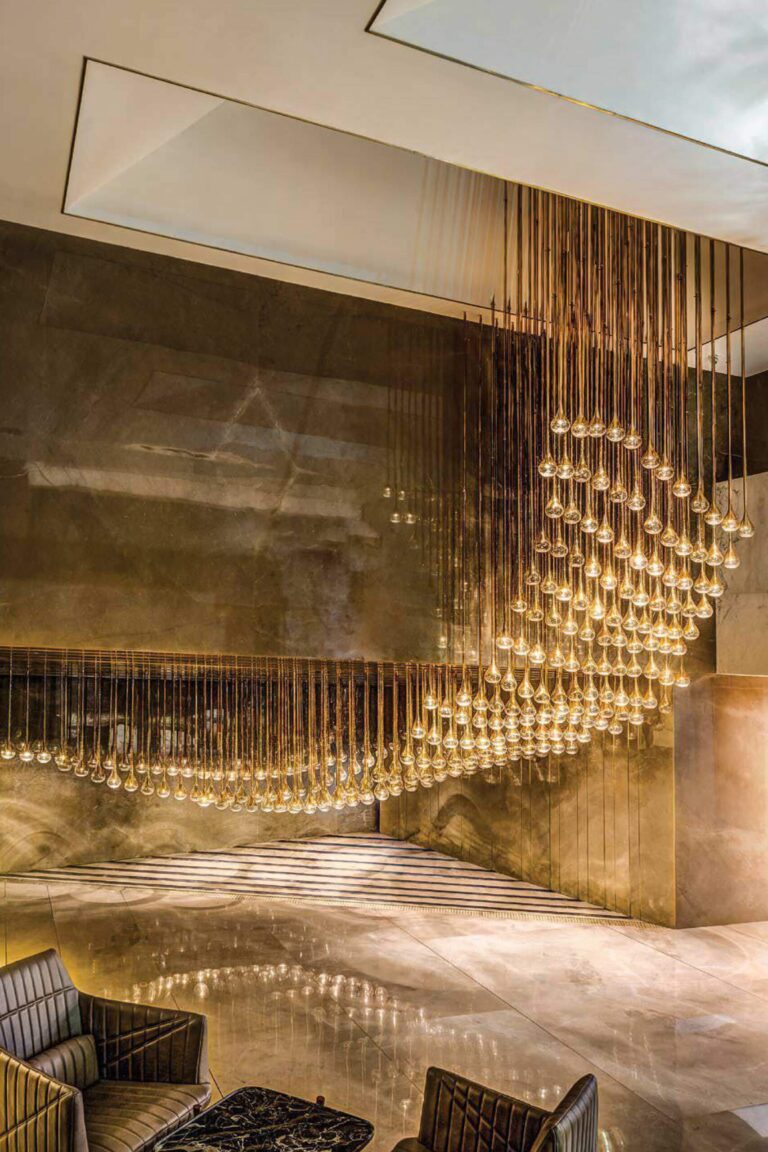
There are a small number of fully equipped studios in India that specialise in custom-glass design and creation. One of them is Delhi based Klove Studios, that focuses on high end sculptural objects and lighting installations. Founded and run by designers Prateek Jain and Gautam Seth, the studio’s strength is its continued association with local artisans, and collaboration with skilled glass blowers to produce refined objects that balance craft knowledge with contemporary sensibilities of light and space.
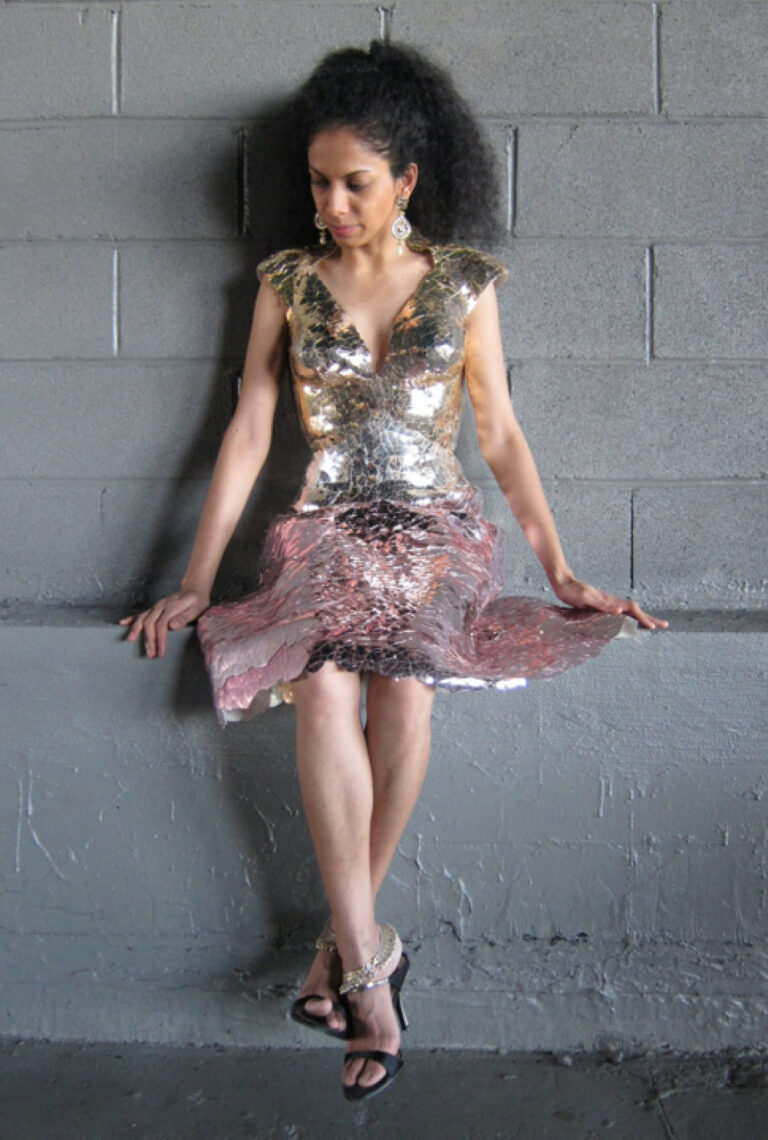
Bangalore based ChoChoMa studios, initiated by Massachusetts based artist and designer Anjali Srinivasan, was started originally as a fair-trade umbrella for glass artisans she was working with in Delhi. The objective was to assist them with upgraded technology, and offer design inputs so as to provide opportunities for them to sell directly to consumers. Its role has changed significantly over the years, and it is now a team of creative makers who conceive and produce works in glass that are not available in the world of readymade solutions.
